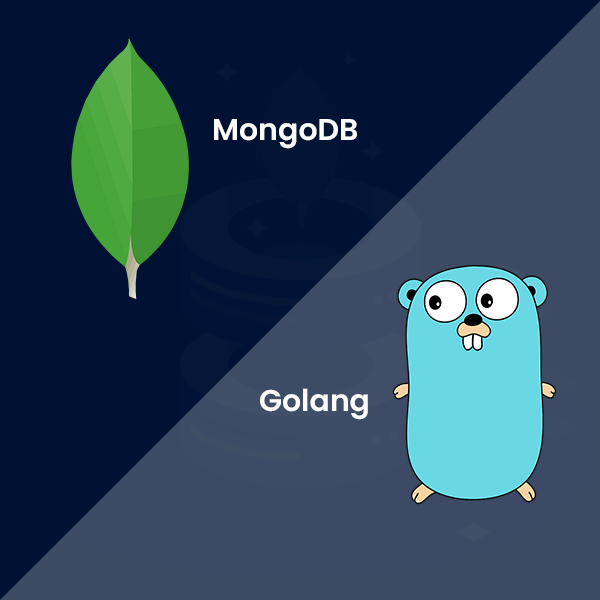How to connect the Golang app with MongoDB-Connect Infosoft

In this article, you will learn how to link your Go (Golang) application to your MongoDB cluster. You will also learn how to ping the cluster to test your connection. If you are new to Golang development, you have come to the right place.
Before you begin, there are a few things you must do to get the programme started. The first thing you should do is create an account on MongoDB Atlas. MongoDB Atlas is a cloud version of MongoDB, and that is what you will use to connect to your Go application.
To Connect a Golang Application with MongoDB, You can follow these steps:
Step 1: Install MongoDB Driver:
Make sure you have the MongoDB driver installed in your Golang environment. The most popular MongoDB driver for Go is "mongo-go-driver." You can install it using the following command:
```shell
go get go.mongodb.org/mongo-driver/mongo
```
Step 2: Import The Required Packages:
In your Go application, import the necessary packages for connecting to MongoDB and performing database operations:
```go
import (
"context"
"fmt"
"go.mongodb.org/mongo-driver/mongo"
"go.mongodb.org/mongo-driver/mongo/options"
)
```
Step 3: Creating The Main Function:
The main function is the entry point of your Go application. It's where your program starts executing. Here's an example of creating the main function for a Go application that connects to MongoDB:
```go
package main
import (
"context"
"fmt"
"go.mongodb.org/mongo-driver/mongo"
"go.mongodb.org/mongo-driver/mongo/options"
)
func main() {
// Connect to MongoDB
client, err := connect()
if err != nil {
fmt.Println("Error connecting to MongoDB:", err)
return
}
defer closeConnection(client)
// Perform database operations
err = insertDocument(client)
if err != nil {
fmt.Println("Error inserting document:", err)
return
}
fmt.Println("Document inserted successfully!")
}
func connect() (*mongo.Client, error) {
connectionString := "mongodb://localhost:27017"
clientOptions := options.Client().ApplyURI(connectionString)
client, err := mongo.Connect(context.Background(), clientOptions)
if err != nil {
return nil, err
}
return client, nil
}
func closeConnection(client *mongo.Client) {
client.Disconnect(context.Background())
}
func insertDocument(client *mongo.Client) error {
collection := client.Database("mydatabase").Collection("mycollection")
document := bson.M{"name": "John Doe", "age": 30}
_, err := collection.InsertOne(context.Background(), document)
if err != nil {
return err
}
return nil
}
```
This is a basic example to demonstrate the flow of connecting to MongoDB and performing an operation. You can modify and expand upon this structure to suit your application's needs, such as adding error handling, implementing additional database operations, or structuring your code into separate files and packages.
Remember to import the required packages and adjust the database and collection names according to your specific setup.
Step 4: Establish A Connection:
Create a function to establish a connection with MongoDB. Use the `mongo.Connect` function to connect to your MongoDB instance. Provide the connection string as a parameter to the `Connect` function:
```go
func connect() (*mongo.Client, error) {
connectionString := "mongodb://localhost:27017"
clientOptions := options.Client().ApplyURI(connectionString)
client, err := mongo.Connect(context.Background(), clientOptions)
if err != nil {
return nil, err
}
return client, nil
}
```
In the above example, we are connecting to a MongoDB instance running on the local machine on the default port 27017. You should modify the `connectionString` variable to match the connection details of your MongoDB instance.
Step 5: Perform Database Operations:
Once the connection is established, you can perform various database operations like inserting documents, querying data, updating documents, etc. Here's an example of inserting a document into a collection:
```go
func insertDocument(client *mongo.Client) error {
collection := client.Database("mydatabase").Collection("mycollection")
document := bson.M{"name": "John Doe", "age": 30}
_, err := collection.InsertOne(context.Background(), document)
if err != nil {
return err
}
return nil
}
```
In this example, we are inserting a document with a name and age field into a collection named "mycollection" in the "mydatabase" database. Modify the database and collection names according to your requirements.
Step 6: Close The Connection:
After you have finished using the MongoDB connection, make sure to close it to release resources. Use the `Disconnect` method on the client object to close the connection:
```go
func closeConnection(client *mongo.Client) {
client.Disconnect(context.Background())
}
```
Call this function when you're done with the database operations.
That's it! You now have the basic steps to connect a Golang application with MongoDB. Remember to handle errors appropriately and add error checking throughout your code.
Mistakes To Be Aware Of:
When connecting a Golang application with MongoDB, there are a few common mistakes to be aware of. Here are some potential pitfalls and mistakes to watch out for:
1. Failure To Handle Errors:
Always remember to handle errors appropriately throughout your code. Ignoring errors or not checking the return values of functions can lead to unexpected behavior and difficult debugging. Make sure to handle errors using if statements or error-checking functions like `log.Fatal` or `fmt.Println` with appropriate error messages.
2. Incorrect Import Statements:
Make sure you import the required packages correctly. In the provided example, the necessary packages to connect to MongoDB and perform operations are imported. If you miss any of these imports or import incorrect packages, it will result in compilation errors.
3. Incorrect Connection String:
Ensure that the connection string is accurate and matches your MongoDB instance's configuration. The connection string specifies the host, port, authentication credentials (if any), and other connection options. If you provide an incorrect or incomplete connection string, the application will fail to connect to MongoDB.
4. Failure To Handle Context:
In the provided example, the `context.Background()` function is used to create a context for the database operations. The context is essential for managing timeouts, cancellations, and other contextual information. Make sure you handle the context properly, passing it to functions that require it and canceling the context when necessary.
5. Unclosed Connections:
It's crucial to close the MongoDB connection when you no longer need it. In the example, the "closeConnection()" function is called using the "defer" statement to ensure the connection is closed when the main function finishes executing. Forgetting to close the connection can lead to resource leaks and potential issues with subsequent connections.
6. Incomplete or Incorrect Database Operations:
When performing database operations, such as inserting documents or querying data, ensure that the collection and database names are accurate and match your MongoDB setup. Additionally, double-check the syntax and structure of your operations to avoid mistakes that could cause errors or unexpected behavior.
By being aware of these potential mistakes, you can write more robust and reliable code when connecting your Golang application with MongoDB. Always follow best practices, handle errors effectively, and thoroughly test your code to ensure proper functionality.
